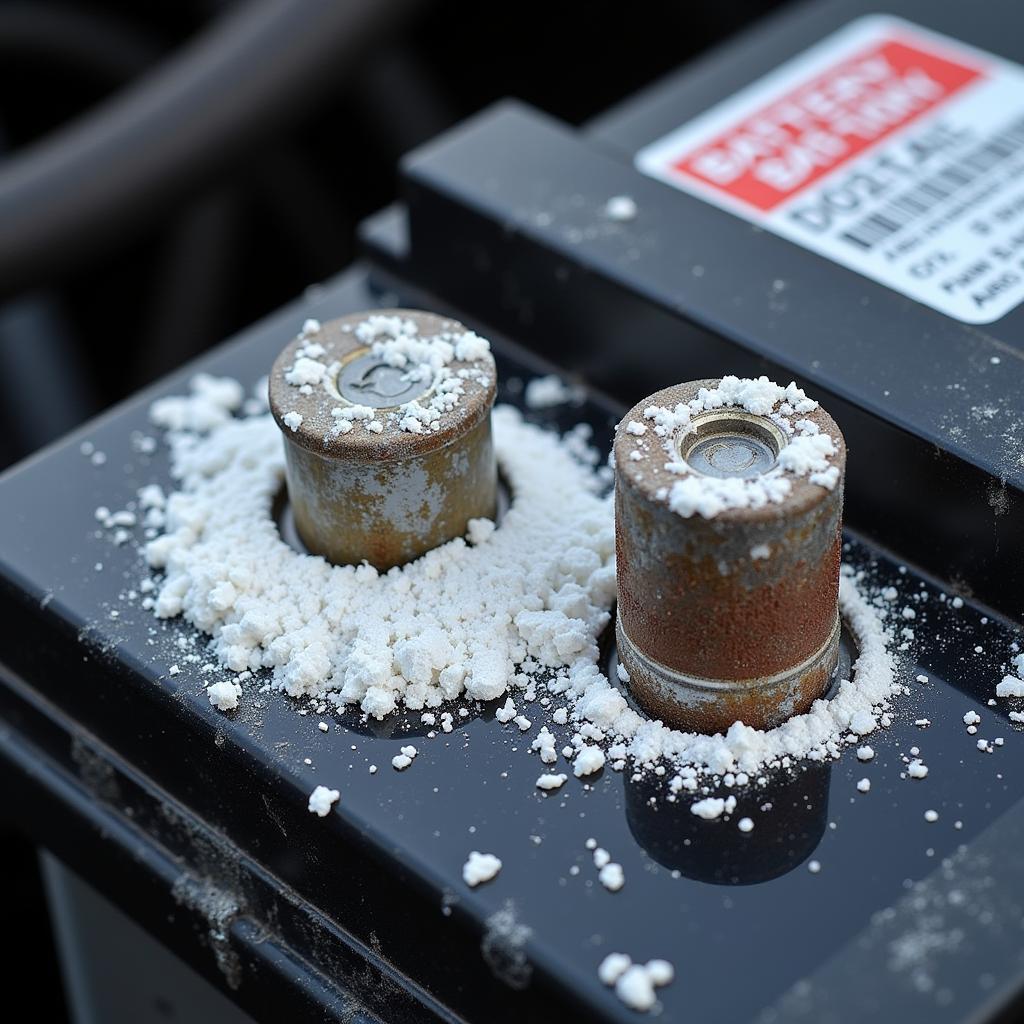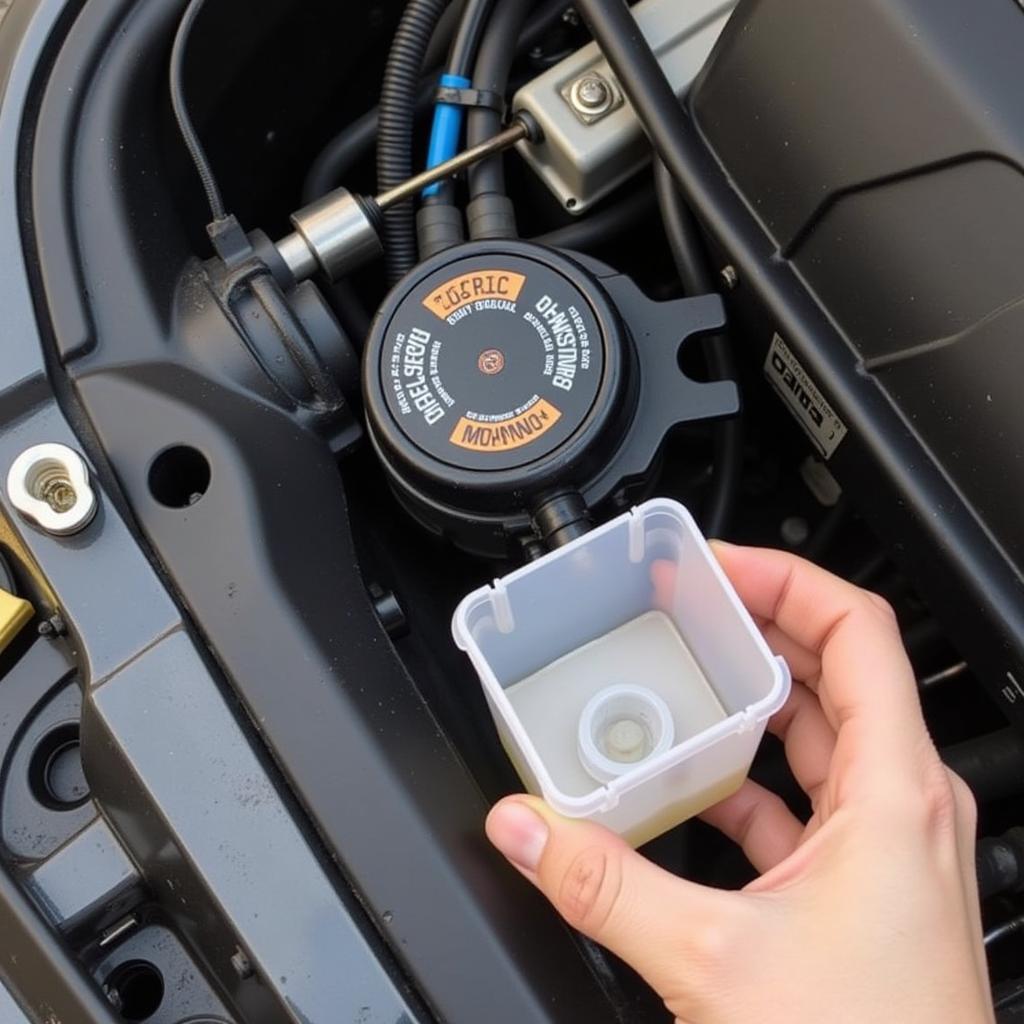A dead battery in your 2015 Honda CRV can be frustrating, especially if it happens frequently. This article will dive deep into the causes of a 2015 crv battery drain and provide practical solutions, whether you’re a DIY enthusiast or prefer professional help.
Having a reliable car battery is crucial for a smooth driving experience. A 2015 crv battery drain can stem from various issues, from a faulty alternator to parasitic draws. Understanding the potential culprits is the first step towards fixing the problem and avoiding future headaches. Let’s explore the common causes and how you can diagnose them.
Common Causes of 2015 CRV Battery Drain
Several factors can contribute to a 2015 CRV battery drain. Here are some of the most frequent culprits:
- Faulty Alternator: The alternator’s job is to recharge the battery while the engine is running. A malfunctioning alternator won’t charge the battery properly, leading to a drain and eventually a dead battery.
- Parasitic Draw: This refers to electrical components that continue to draw power even when the car is off. These can include interior lights, radio, or even faulty wiring.
- Old Battery: Batteries have a limited lifespan. An old battery might not hold a charge as effectively, leading to frequent drains.
- Extreme Temperatures: Both extreme heat and cold can affect battery performance, causing it to drain faster.
- Corroded Battery Terminals: Corrosion on the battery terminals can disrupt the flow of electricity, resulting in a drain.
- Leaving Lights On: Accidentally leaving interior or exterior lights on can drain the battery overnight.
After this introductory section, we can talk about how a faulty key fob can drain the car’s battery. Learn more about honda crv 2015 key fob battery.
 2015 Honda CRV Battery Terminals Corrosion
2015 Honda CRV Battery Terminals Corrosion
Diagnosing a 2015 CRV Battery Drain
Identifying the specific cause of your 2015 crv battery drain requires a systematic approach. Here’s how you can diagnose the problem:
- Visual Inspection: Check the battery terminals for corrosion. Clean them with a wire brush and baking soda solution if necessary.
- Parasitic Draw Test: Use a multimeter to measure the current draw with the car off. A reading higher than 50 milliamps might indicate a parasitic draw.
- Alternator Test: Have your alternator tested at an auto parts store or mechanic. This will determine if it’s charging the battery properly.
- Battery Test: A load test can reveal if your battery is holding a charge effectively.
Replacing your key fob battery is a simple task you can do at home. For a step-by-step guide, see our article on replace battery honda key fob.
Solutions for 2015 CRV Battery Drain
Once you’ve identified the cause, you can take the necessary steps to fix the problem. Here are some solutions for common battery drain issues:
- Replace the Alternator: If your alternator is faulty, replacement is the only solution.
- Eliminate Parasitic Draws: Identify and disconnect the component causing the parasitic draw. This may involve repairing faulty wiring or replacing a malfunctioning component.
- Replace the Battery: If your battery is old or failing, replacing it with a new one is essential.
- Clean Battery Terminals: Regularly cleaning the battery terminals can prevent corrosion and ensure a good connection.
If you’re unsure about the correct battery for your CRV, check out our guide on key fob battery for 2015 honda crv. A professional mechanic can also help diagnose and resolve more complex electrical issues.
Conclusion
Addressing a 2015 crv battery drain promptly is vital for avoiding further car trouble. By understanding the potential causes and using the diagnostic methods outlined in this article, you can effectively troubleshoot and resolve the issue. Regular maintenance and timely repairs will ensure your 2015 CRV runs smoothly for years to come. For more information on key fob battery replacement, visit our resource on honda crv key fob battery replacement.

